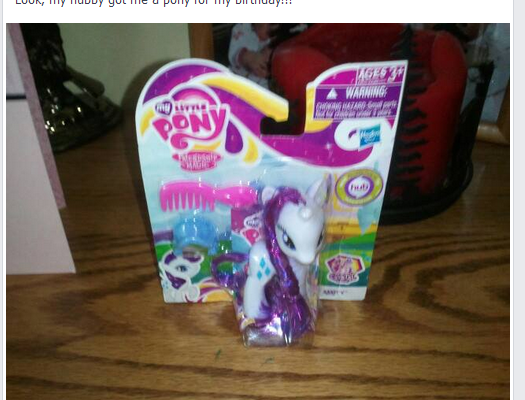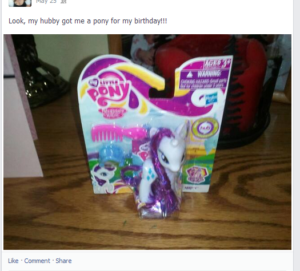What would your future-you have to say to you?
The no-pants guide to spending, saving, and thriving in the real world.
What would your future-you have to say to you?
It’s true that the benefits of a parent cannot be measured or quantified in any meaningful way. It’s hard to put a price on the emotional commitment and special experience of raising a child as a parent, some of which may not even be realized by the parents themselves until afterwards. But it is undeniable that the experience of parenthood is a rewarding and special time in someone’s life.


Welcome to the Best of Money Carnival #87, the Gold Rush Edition.
On January 24th, 1848, gold was discovered in Coloma, California by construction overseer James W. Marshall. The following year, one hundred thousand people moved to California to either strike it rich, or profit from those who were trying to strike it rich. The gold rush began 163 years ago today.
10. N.W. Journey presents Business use of Home Deduction posted at Networth Journey and says, “How to deduct your business home expenses.”
Some people recommend stockpiling gold so you’ll have something of value to spend after society as we know it collapses. Does anyone know how to make change from a gold bar for a loaf of bread?
9. Darwin presents Present Value of Money Explained – MBA Monday posted at Darwin’s Money and says, “One of the most important financial concepts is also one of the most misunderstood. Make sure you understand the Present value of Money – with these real life examples. It will save you thousands!”
In 1854, a 195 pound gold nugget was found at Carson Hill in California. It was valued at $43,534. That would be worth $3,160,357.20 today.
8. RJ Weiss presents What Your Optimal Income? posted at Gen Y Wealth and says, “An exercise to find your optimal income level.”
Q: Which weighs more: a pound of feathers, or a pound of gold? A: A pound of feathers. Gold is weighed using Troy Weight, which only has 12 ounces per pound.
7. BWL presents How To Select A Financial Advisor posted at Christian Personal Finance and says, “Find out how to select the best financial adviser for you.”
Until the onset of modern electronics, which use gold because it doesn’t corrode or tarnish, gold had no practical value of its own. Its entire value resided in the fact that it was pretty and relatively scarce.
6. Miss T presents 10 Ways to $ave Energy Comfortably | Prairie EcoThrifter.com posted at Prairie Eco-Thrifter and says, “How great is it to save money and the planet at the same time?!”
Q: Which weighs more: a ounce of feathers, or a ounce of gold? A: A ounce of gold. Troy Weight has fewer ounces that avoirdupois, but each ounce weighs more. There are 31.1 grams in a Troy ounce, but only 28.4 grams in a standard ounce.
5. Craig Ford presents Employers Look at Credit Reports | Ludicrous or Smart Business? posted at Money Help For Christians and says, “Should employers be able to see your credit report?”
Outside of collectible or government-issued coins, gold is priced according to it’s spot price, which fluctuates constantly. Dealers will generally pay a percentage under spot when buying gold, then sell for a percentage over spot. Always know the spot price of gold before you agree to buy or sell any.
4. MoneyNing presents Tax Time: Do I Have to Report that Income? posted at Money Ning and says, “Did you receive any income last year? Do you really have to report everything?”
Gold is the 58th most rare natural element, out of 92.
3. Silicon Valley Blogger presents I Just Lost My Job! How I’m Downsizing My Household Expenses posted at The Digerati Life and says, “I share my story of job loss and what ideas I have for paring down my expenses in order to cope with this loss of income. In the meantime, I’m doing what I can to find a new job!”
Only 20% of the gold from the Gold Rush deposits has been reclaimed. The rest is still out there.
2. The Financial Blogger presents 5 Reasons Why You Need A Partner In Your Business posted at The Financial Blogger and says, “A post outlining the benefits of a business partner.”
As of the end of 2009, more than 160,000 tons of gold have been mined, most of which was done in the latter half of the 20th century.
And the winner is…
1. Amanda L Grossman presents Frugal Lessons from People Who Survived the Great Depression posted at Frugal Confessions – Frugal Living and says, “Have you ever met someone who was alive during the Great Depression? They are changed people. The Great Depression left a great impression on their thoughts, their styles, and their habits. I am fascinated by this time period, and researched the question of what frugal habits these people developed to survive.”
I’d like to thank everyone who participated. Next week’s host is PT Money, so don’t forget to submit your entry!
I just noticed this didn’t post on time.
There are a few ways to get more out of this site.
Live Real, Now by email. You get a choice between having all of the posts delivered to your inbox, or just occasional updates and deals. Both options get my Budget Lessons, free of charge.
RSS subscription. You can have every post delivered to your favorite newsreader.
Twitter. I’m @LiveRealNow. You can get my snark and pseudo-wisdom 140 characters at a time. Ooh!
Facebook. Everybody has a fan page, right?
Now, for the part you’ve all been waiting for…
This week’s roundup:
It’s time to buy school supplies again. Don’t let it break the bank.
Chewbacca on a squirrel, fighting Nazis.
A pizza peel with a conveyor belt. The pinnacle of pizza-making awesomeness.
Have you ever looked into the psychology of a restaurant menu?
Carnivals I’ve participated in:
Carnival of Personal Finance #267 at Beating Broke posted A Budget Isn’t Enough.
Wealth Informatics hosted the Festival of Frugality and posted Payday Loans Suck.
Canajun Finances hosted the Best of Money Carnival and posted Life Altering Lessons I Learned From My Debt.

For the past couple of years, my daughters have been riding in horse shows with a local saddle club. We’ve been lucky in that my wife’s cousin has let us borrow her horse for the shows, so costs have been minimal.
Unfortunately, that horse isn’t available this year. We knew that a few months ago, so the plan was to take a year off from the shows and focus on lessons, to get the girls some real skills. We found a great instructor at a stable about 30 miles from our house. Since we live less than two miles from the border of the biggest city in the state, that’s a comparatively short drive.
We pay her $200 per month for 1 lesson per week for both girls. They each get 30-45 minutes on the horse during each lesson.
Now that show season has started, the plan seems to have changed. The girls will be riding a different borrowed pony tomorrow. The shows cost about $50 for registration, lunch, and gas. Our club has 1 show per month, but my wife has assured me they’ll only be hitting three shows this season and limiting the number of events to keep the cost down.
The direct costs aren’t too bad, but there’s a problem with keeping-up-with-the-Joneses accessorizing. Vests and boots and helmets and belts and shirts, oh my.
I’d guess our costs for the summer will be $300 per month.
One thing we’ve been considering is buying a pony. We can get an older pony for around $500-1000. Older is good because they are calmer and slower. Boarding the thing will cost another $200 per month. We’ve been slowly accumulating the stuff to own a horse, so I’m guessing the “OMG, he let me buy a horse, now I need X” shopping bill will come to around $1500, but I’ll figure $2000 to be safe. We already have a trailer, a saddle, blankets, buddy-straps, combs, brushes, buckets, rakes, shovels, and I-bought-this-but-I-will-just-put-it-in-the-pile-of-horse-stuff-so-Jason-will-never-notice stuff. We’re certainly close to being ready to buy.
(FYI: If you’re starting from scratch, don’t think you’re going to get into horse ownership for less than $10,000 the first year, and that’s being a very efficient price-shopper.)
So we’re looking at $5400 for a horse, gear, and boarding the first year. If we cancel the lessons, by spring we’d have $2000 of that saved and most of the rest can be bought over time.
On the other hand, if we go that route, we’ll never save enough to buy the hobby farm we’re looking for.
Decisions, decisions. I should just buy a new motorcycle. Within a year, I win financially.
When I was in high school and working 15 to 20 hours a week, my mom gave me free rein to use the money I earned as I would like. Actually, she said nothing to me about saving for college or putting some money into savings.
When I had friends who complained that they had to put away some of their earnings, I commiserated with them. How unfair of their parents to make them save some of their money! They worked hard for their money, often at crappy part-time jobs. They deserved to spend the money any way they saw fit.
The way I saw it, why save for college? According to financial aid rules, if the student has any savings, she would have to use the majority of it to pay for college. How unfair. To add insult to injury, if prospective college students have some savings, they would qualify for less financial aid, which often meant fewer student loans.
The injustice.
Yes, it was better to spend my hard earned money than save it and be penalized.
No one told me differently. In fact, many people in my family agreed with me and encouraged me to buy a used car to get to and from my job. Of course, I paid the loan payments for the car, the gas I used and my insurance out of money from my job. That was a responsible use of money, but I also went out to eat with friends, a lot. At 16, I was going out to eat with my friends twice a week at least.
However, my plan worked perfectly. When I went to college, I didn’t have to use any of my hard earned cash. No, not me, because I hadn’t saved anything. Instead, I left college with nearly $20,000 in student loan debt. I took two years off and paid down as much student loan debt as I could, getting it down to about $8,000, but then I went to graduate school and took on more student loan debt. I graduated with nearly $25,000 in debt total. I am still paying on it today, 13 years later.
Now that I am the parent, I am one of those “awful” parents who makes her kids save. My son knows when he gets his allowance, some goes to save, some goes to donate, and some goes to spend. True, it makes me cringe when he uses his spend money on little trinkets like temporary tattoos, stickers, and gum, but I keep silent. He did the work to earn the money, and he can spend it as he likes. However, I am inflexible with saving; that money must be set aside. When he goes to college, I expect that he will have to use the majority of that money. Rather than seeing it as a waste, I see it as an important component of his financial education. Spending his money to pay a portion of his college education will hopefully make him take college more seriously.
Meanwhile, I have already begun having chats with him about money, spending, and budgeting. He watches his dad and I work hard to pay down our debt with gazelle intensity. He sees me use a calculator at the grocery store to see how much our groceries will be.
Ultimately, he will make his own financial decisions as he grows up, but I plan to teach him throughout these important years so that even if he turns into a spendthrift, he will have a firm financial understanding to revert to as he ages. While my mom taught me how to stretch money further, she never taught me how to save; I hope saving is a lesson my son takes with him throughout his adulthood.
How do you teach your kids about money management?
Melissa writes at Fiscal Phoenix where she encourages people to rise from the ashes of their financial mistakes as she and her husband are doing.